Black-necked cranes start migration from reservoir in Lhunzhub, Xizang
Updated: 2024-03-20 (Xinhua)  Print
Print 


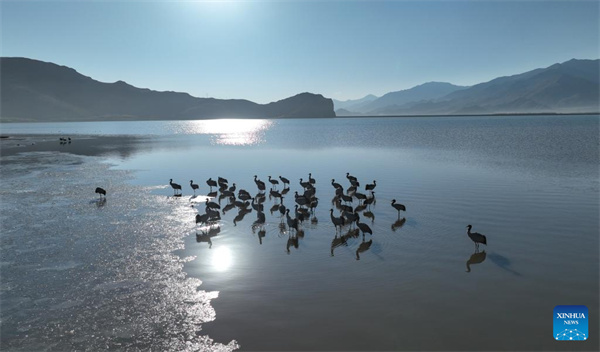
Black-necked cranes are seen at a reservoir in Lhunzhub county of Lhasa, Southwest China's Xizang autonomous region, March 17, 2024. As the temperature gradually rises, black-necked cranes have started their migration from the reservoir in Lhunzhub county. The black-necked crane, a species under first-class state protection in China, mainly inhabits plateau meadows and marshes at an altitude of 2,500 to 5,000 meters. [Xinhua/Jigme Dorje]
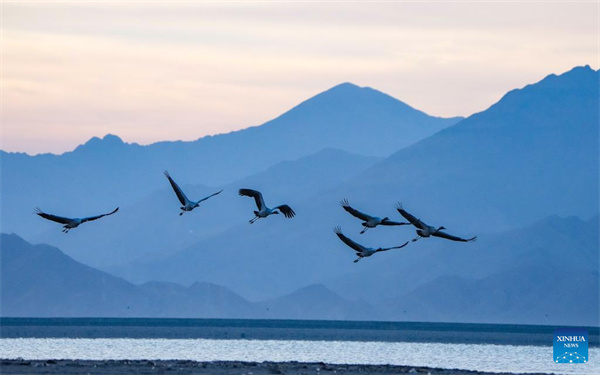
Black-necked cranes are seen at a reservoir in Lhunzhub county of Lhasa, Southwest China's Xizang autonomous region, March 17, 2024. As the temperature gradually rises, black-necked cranes have started their migration from the reservoir in Lhunzhub county. The black-necked crane, a species under first-class state protection in China, mainly inhabits plateau meadows and marshes at an altitude of 2,500 to 5,000 meters. [Xinhua/Jigme Dorje]
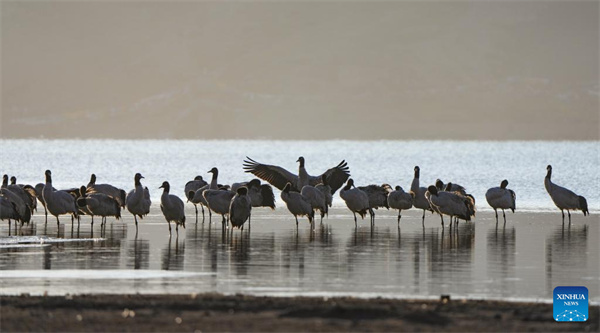
Black-necked cranes are seen at a reservoir in Lhunzhub county of Lhasa, Southwest China's Xizang autonomous region, March 17, 2024. As the temperature gradually rises, black-necked cranes have started their migration from the reservoir in Lhunzhub county. The black-necked crane, a species under first-class state protection in China, mainly inhabits plateau meadows and marshes at an altitude of 2,500 to 5,000 meters. [Xinhua/Jigme Dorje]
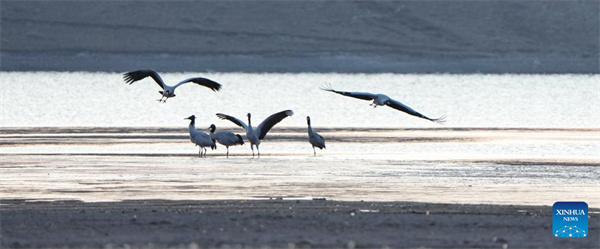
Black-necked cranes are seen at a reservoir in Lhunzhub county of Lhasa, Southwest China's Xizang autonomous region, March 17, 2024. As the temperature gradually rises, black-necked cranes have started their migration from the reservoir in Lhunzhub county. The black-necked crane, a species under first-class state protection in China, mainly inhabits plateau meadows and marshes at an altitude of 2,500 to 5,000 meters. [Xinhua/Jigme Dorje]
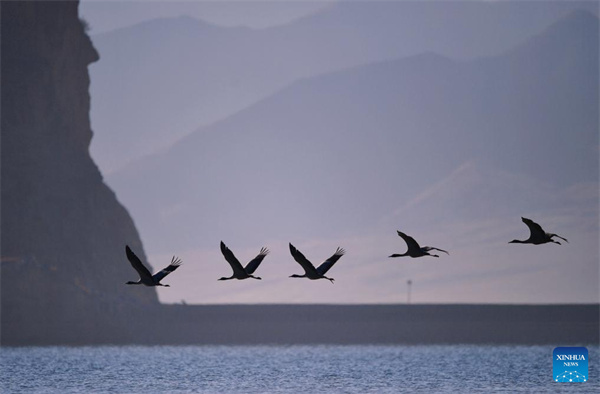
Black-necked cranes are seen at a reservoir in Lhunzhub county of Lhasa, Southwest China's Xizang autonomous region, March 17, 2024. As the temperature gradually rises, black-necked cranes have started their migration from the reservoir in Lhunzhub county. The black-necked crane, a species under first-class state protection in China, mainly inhabits plateau meadows and marshes at an altitude of 2,500 to 5,000 meters. [Xinhua/Zhang Rufeng]
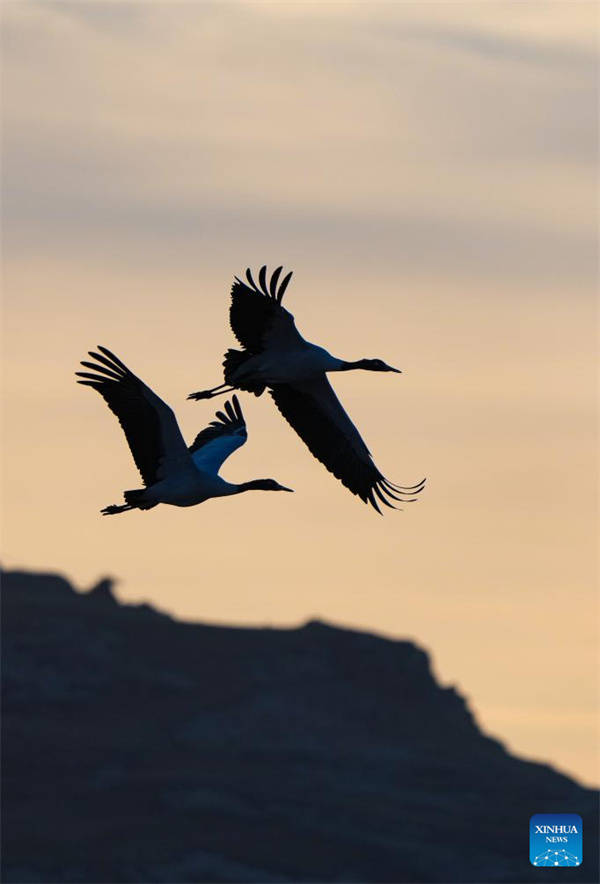
Black-necked cranes are seen at a reservoir in Lhunzhub county of Lhasa, Southwest China's Xizang autonomous region, March 17, 2024. As the temperature gradually rises, black-necked cranes have started their migration from the reservoir in Lhunzhub county. The black-necked crane, a species under first-class state protection in China, mainly inhabits plateau meadows and marshes at an altitude of 2,500 to 5,000 meters. [Xinhua/Jigme Dorje]
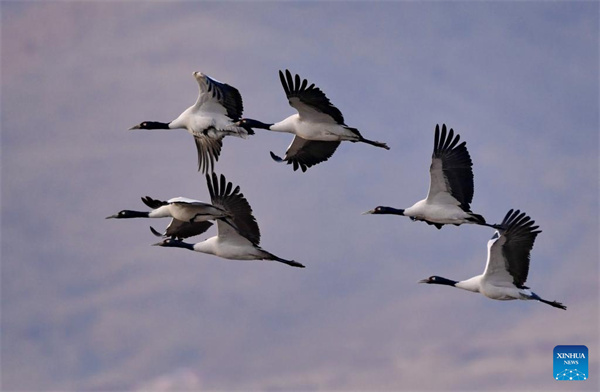
Black-necked cranes are seen at a reservoir in Lhunzhub county of Lhasa, Southwest China's Xizang autonomous region, March 17, 2024. As the temperature gradually rises, black-necked cranes have started their migration from the reservoir in Lhunzhub county. The black-necked crane, a species under first-class state protection in China, mainly inhabits plateau meadows and marshes at an altitude of 2,500 to 5,000 meters. [Xinhua/Zhang Rufeng]
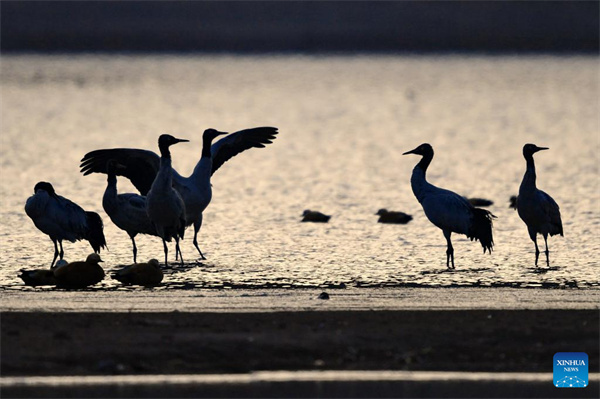
Black-necked cranes are seen at a reservoir in Lhunzhub county of Lhasa, Southwest China's Xizang autonomous region, March 17, 2024. As the temperature gradually rises, black-necked cranes have started their migration from the reservoir in Lhunzhub county. The black-necked crane, a species under first-class state protection in China, mainly inhabits plateau meadows and marshes at an altitude of 2,500 to 5,000 meters. [Xinhua/Zhang Rufeng]
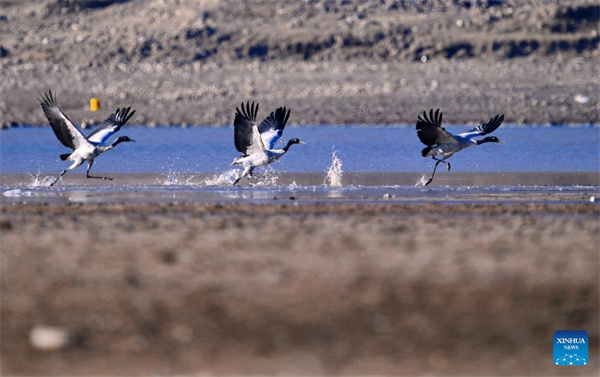
Black-necked cranes are seen at a reservoir in Lhunzhub county of Lhasa, Southwest China's Xizang autonomous region, March 17, 2024. As the temperature gradually rises, black-necked cranes have started their migration from the reservoir in Lhunzhub county. The black-necked crane, a species under first-class state protection in China, mainly inhabits plateau meadows and marshes at an altitude of 2,500 to 5,000 meters. [Xinhua/Zhang Rufeng]
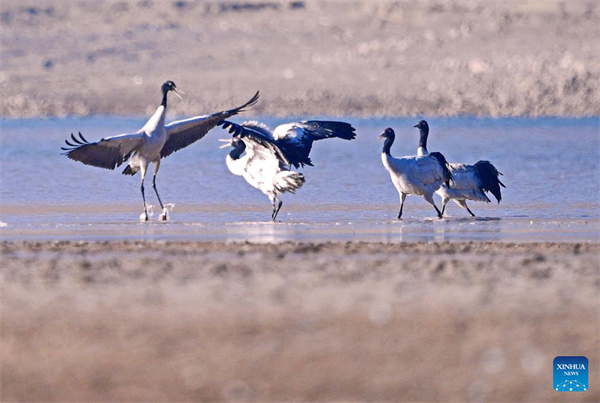
Black-necked cranes are seen at a reservoir in Lhunzhub county of Lhasa, Southwest China's Xizang autonomous region, March 17, 2024. As the temperature gradually rises, black-necked cranes have started their migration from the reservoir in Lhunzhub county. The black-necked crane, a species under first-class state protection in China, mainly inhabits plateau meadows and marshes at an altitude of 2,500 to 5,000 meters. [Xinhua/Zhang Rufeng]
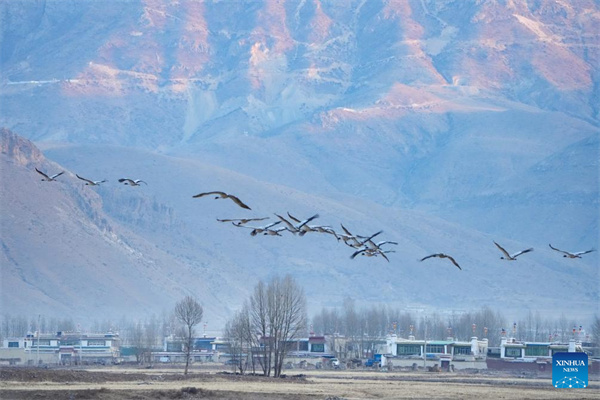
Black-necked cranes are seen at a reservoir in Lhunzhub county of Lhasa, Southwest China's Xizang autonomous region, March 17, 2024. As the temperature gradually rises, black-necked cranes have started their migration from the reservoir in Lhunzhub county. The black-necked crane, a species under first-class state protection in China, mainly inhabits plateau meadows and marshes at an altitude of 2,500 to 5,000 meters. [Xinhua/Jigme Dorje]
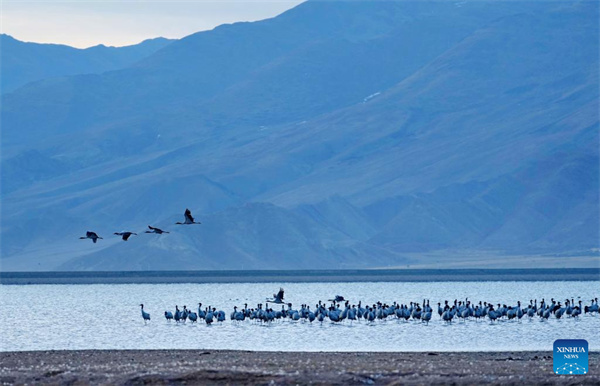
Black-necked cranes are seen at a reservoir in Lhunzhub county of Lhasa, Southwest China's Xizang autonomous region, March 17, 2024. As the temperature gradually rises, black-necked cranes have started their migration from the reservoir in Lhunzhub county. The black-necked crane, a species under first-class state protection in China, mainly inhabits plateau meadows and marshes at an altitude of 2,500 to 5,000 meters. [Xinhua/Zhang Rufeng]
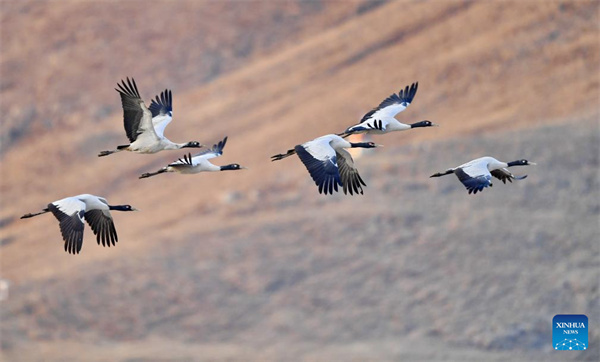
Black-necked cranes are seen at a reservoir in Lhunzhub county of Lhasa, Southwest China's Xizang autonomous region, March 17, 2024. As the temperature gradually rises, black-necked cranes have started their migration from the reservoir in Lhunzhub county. The black-necked crane, a species under first-class state protection in China, mainly inhabits plateau meadows and marshes at an altitude of 2,500 to 5,000 meters. [Xinhua/Zhang Rufeng]
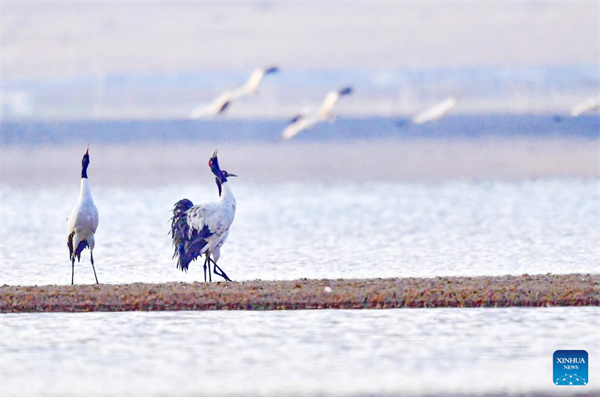
Black-necked cranes are seen at a reservoir in Lhunzhub county of Lhasa, Southwest China's Xizang autonomous region, March 17, 2024. As the temperature gradually rises, black-necked cranes have started their migration from the reservoir in Lhunzhub county. The black-necked crane, a species under first-class state protection in China, mainly inhabits plateau meadows and marshes at an altitude of 2,500 to 5,000 meters. [Xinhua/Zhang Rufeng]








